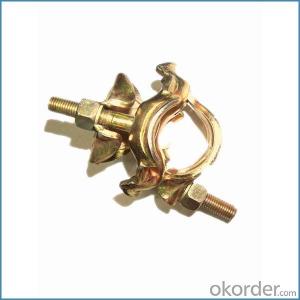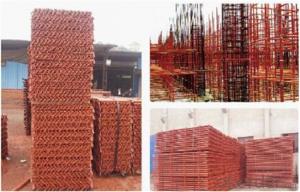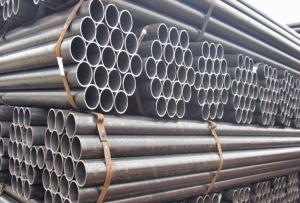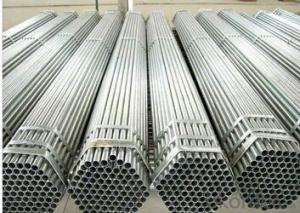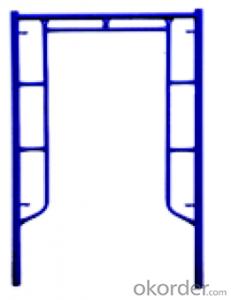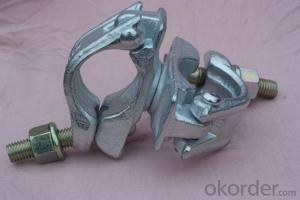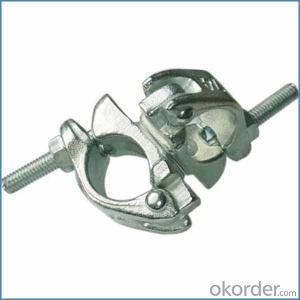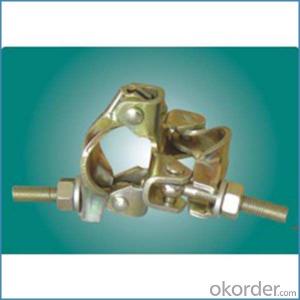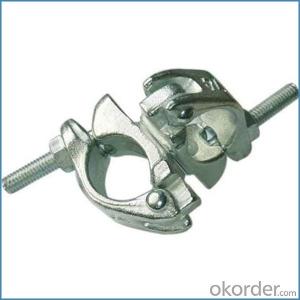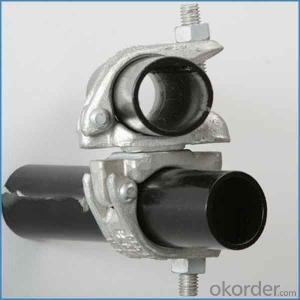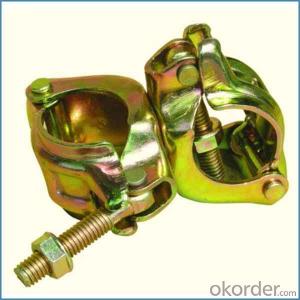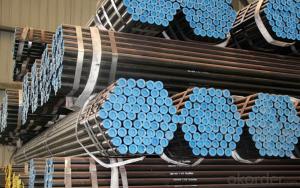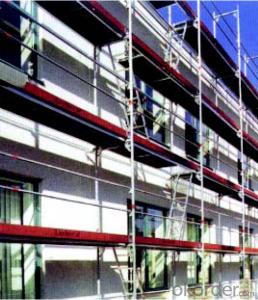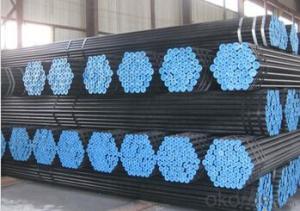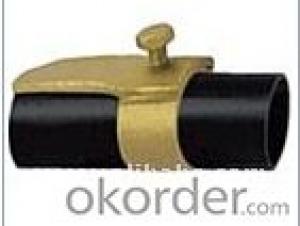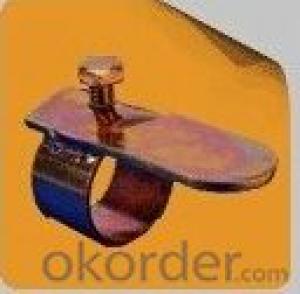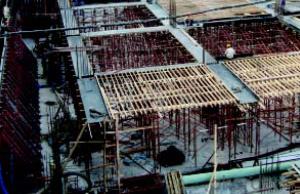German Type for Sale Swivel Coupler British Type for Sale
- Loading Port:
- Tianjin
- Payment Terms:
- TT OR LC
- Min Order Qty:
- 1000 kg
- Supply Capability:
- 100000 kg/month
OKorder Service Pledge
OKorder Financial Service
You Might Also Like
German Type for Sale Swivel Coupler British Type for Sale
Description
1.The scaffolding coupler is always used to connect the steel pipe as scaffolding system.
2.The often used coupler is swivel coupler and righ angle coupler .
3.We can provide types of scaffolding coupler according to your requirement.
4.Couoler can fix the 48.3mm scaffolding steel pipe tightly and make the whole scaffolding system more steadily.
5.Material:Q235 steel
6.Overall Size:48.3mm*48.3mm
7.Surface Finish: Galvanized/ Painted
8.Standard:BS1139,EN74
9.Package:25pcs/bag
10.Manufactuering as per customer requirements

Feature
(1)Excellent Anti-Breaking—Cold Pressed Steel
(2)Outstanding Resistance Deformation
(3)Strong Anti-Dropping Ability
(4)Longtime USe
(5)Qualtity Guaranteed
(6)OEM Service
Photo
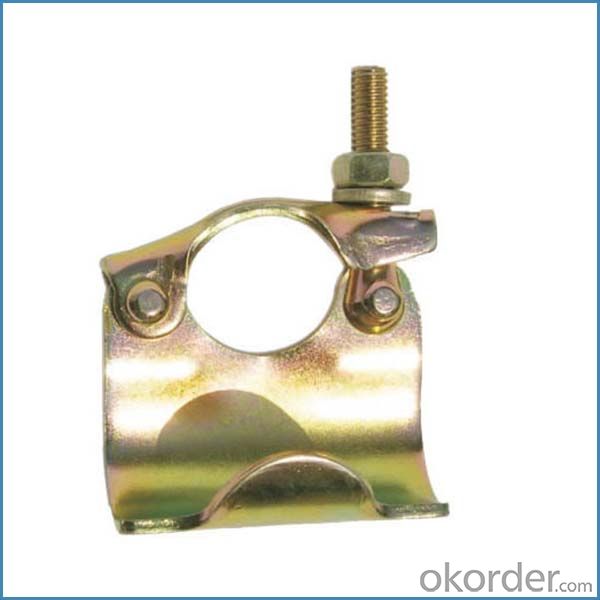
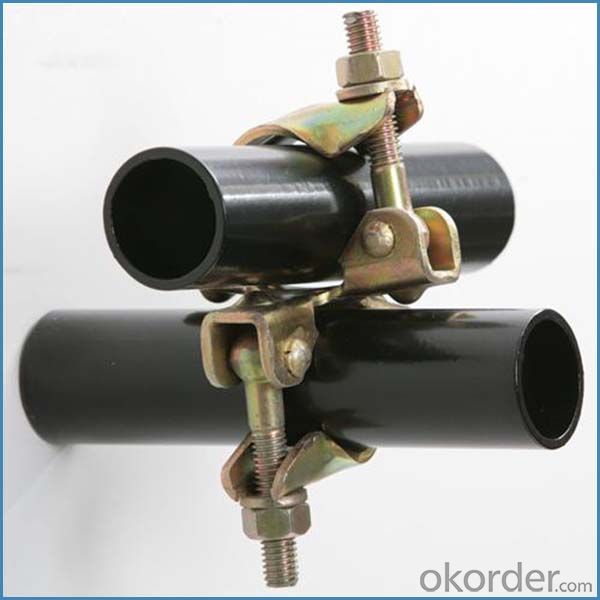
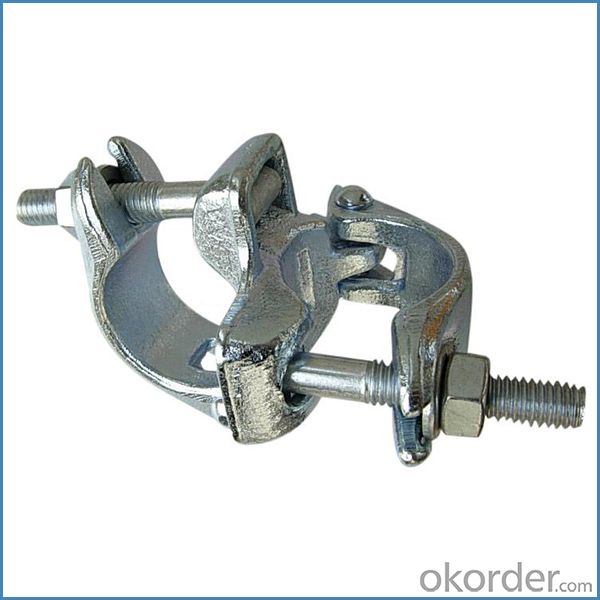
Parameter
| Material | Q235,345steel |
| Size | 48.3mm*48.3mm |
| Surface finish | Galvanized |
| Weight | 1.1kg around |
| Standard | BS1139,EN74 |
| Package | 25pcs/bag,steel pallet |
| Manufacture | As per customer requirement |
| Market | Africa, South America, the Middle East and Asia |
FAQ
Q: Are you a factory or trading company?
We are a state-owned corporation in China,dealing with various kinds of building materials.We have our holding subsidiaries.
Q: Where is your factory located? How can I visit there?
Our factory is located all around China.
Q: Can I get some samples?
Sample is free, customer only pay freight for the first time.
Q: Delivery?
10-30days. (5-15 containers)
Any question,feel free to contact us.
- Q: Are there any specific safety precautions for working at height with steel tube couplers?
- Yes, there are specific safety precautions that should be followed when working at height with steel tube couplers. Here are some important precautions to consider: 1. Training: Workers should receive proper training on the safe use of steel tube couplers, including how to assemble and dismantle them correctly. They should also be trained on the potential hazards associated with working at height. 2. Inspection: Before starting work, it is essential to inspect the steel tube couplers for any signs of damage or wear. Defective or damaged couplers should not be used. 3. Fall Protection: Workers must use appropriate fall protection equipment when working at height, such as harnesses, lanyards, and anchor points. This equipment should be inspected regularly and replaced if necessary. 4. Secure Connection: Steel tube couplers should be securely fastened to the tubes to ensure stability. It is important to follow the manufacturer's instructions and use the correct size and type of coupler for the specific application. 5. Load Capacity: Always consider the load capacity of the steel tube couplers and ensure that it is not exceeded. Overloading can lead to structural failure, causing a potential hazard. 6. Stability: The structure being built using steel tube couplers should be stable and braced properly. Adequate supports and bracing should be used to prevent collapse or movement. 7. Weather Conditions: Weather conditions, such as strong winds, rain, or snow, can affect the stability and safety of working at height. It is important to assess the weather conditions beforehand and take appropriate measures to ensure worker safety. 8. Communication: Clear communication should be established among workers when working at height. This includes using hand signals, radios, or other means to relay instructions and warnings. 9. Regular Inspections: Regular inspections of the steel tube couplers and the work area should be conducted to identify any potential hazards or issues. Any concerns should be addressed promptly to prevent accidents. By following these safety precautions, workers can minimize the risk of accidents and injuries when working at height with steel tube couplers.
- Q: What is the standard size of steel tube couplers used in scaffolding?
- The standard size of steel tube couplers used in scaffolding is typically 48.3mm in diameter.
- Q: Construction construction fastener type steel pipe scaffolding safety management requirements which
- Template works scaffolding bracket inside, is vertical and horizontal on the cross, see the construction of two 140 pages, that is, the landlord said the 2008 specification, in the general scaffolding works inside, is vertical and horizontal, see 174 pages, that is, 2011 norms, The above friends answer is Google Encyclopedia is also true, but should refer to the general scaffolding works. Personally think that in the template works in the sweeping pole should be used vertical and horizontal, in the general scaffolding (such as the external wall decoration) scaffolding should be used in the performance of the spoons of the porphyry porcelain divides the Han riveting is vertical and horizontal! The The The The The The I am also confused, hope that we should give corrections first ~ first first clear with the wall is horizontal horizontal sweeping pole, and the wall level is the vertical level sweeping pole, which can be discussed! The
- Q: Can steel tube couplers be used in scaffolding projects with specific space utilization needs?
- Indeed, when it comes to scaffolding projects with particular requirements for space utilization, steel tube couplers are a viable option. These couplers possess adaptability and can effectively link steel tubes in different arrangements, enabling customization and enhancement of space utilization. Moreover, their strength and durability guarantee a reliable connection between tubes, ensuring the stability and safety of the entire scaffolding structure. Additionally, steel tube couplers are available in various types and sizes, granting flexibility in design and facilitating efficient utilization of the available space. Consequently, for scaffolding projects that demand specific space utilization, steel tube couplers are an appropriate selection.
- Q: Can steel tube couplers be used for scaffolding projects in areas with limited access?
- Yes, steel tube couplers can be used for scaffolding projects in areas with limited access. Steel tube couplers are versatile and can be easily assembled and disassembled in tight spaces. Their compact and lightweight design allows for easy transportation and maneuverability, making them suitable for scaffolding projects in areas with limited access.
- Q: Can steel tube couplers be used in scaffolding towers or only in single-level structures?
- Steel tube couplers have the ability to be utilized in both scaffolding towers and single-level structures. These specific couplers have been designed to effectively connect steel tubes, resulting in a secure and stable connection. Regardless of whether it is a single-level structure or a scaffolding tower, the primary purpose of these couplers remains consistent - to unite steel tubes and establish a rigid framework. In the case of scaffolding towers, steel tube couplers are commonly employed to link the vertical standards and horizontal ledgers, thereby constructing a dependable and robust structure that can be expanded to multiple levels. As a result, steel tube couplers possess versatility and can be applied to various construction scenarios, encompassing both single-level structures and scaffolding towers.
- Q: Can steel tube couplers be used in specialized scaffolding projects, such as bridge construction?
- Yes, steel tube couplers can be used in specialized scaffolding projects, including bridge construction. Steel tube couplers are commonly used in scaffolding systems to connect and secure steel tubes together, providing a strong and reliable structure. They are versatile and can be used in various construction projects, making them suitable for specialized applications such as bridge construction where safety and structural integrity are crucial.
- Q: Can steel tube couplers be used for both straight and curved scaffolding designs?
- Yes, steel tube couplers can be used for both straight and curved scaffolding designs.
- Q: What are the typical applications or industries that use steel tube couplers in scaffolding?
- The typical applications or industries that use steel tube couplers in scaffolding include construction, maintenance, and repair projects in sectors such as residential, commercial, industrial, and infrastructure development.
- Q: Are there any specific instructions for tightening steel tube couplers in scaffolding?
- Tightening steel tube couplers in scaffolding requires following specific instructions. First and foremost, it is crucial to ensure that the couplers match the size and type of the scaffolding tubes being used. The couplers should fit snugly around the tubes to establish a secure connection. Before tightening the couplers, it is advised to thoroughly clean and inspect both the couplers and the tubes. Any dirt, debris, or damage should be eliminated or repaired to guarantee proper functioning of the couplers. To tighten the couplers, a wrench or scaffold spanner should be employed. The couplers ought to be tightened firmly, but not excessively, to prevent any harm to the tubes or the couplers themselves. Adhering to the manufacturer's recommendations for the specific coupler type used is essential, as different couplers may have distinct tightening requirements. Once the couplers are tightened, it is recommended to visually examine the connection to ensure the tubes are securely fastened without any movement or play. If any movement is detected, the couplers should be further tightened or replaced if necessary. Regular inspections are necessary to maintain the tightness and security of the couplers throughout the entire duration of scaffolding usage. Any loose or damaged couplers should be promptly replaced to uphold the safety and stability of the scaffolding structure. It is crucial to note that these instructions may vary based on the regulations and guidelines specific to the country or region where the scaffolding is being used. Therefore, it is always advisable to consult local authorities or an experienced scaffolding professional for precise instructions and guidelines on tightening steel tube couplers in scaffolding.
Send your message to us
German Type for Sale Swivel Coupler British Type for Sale
- Loading Port:
- Tianjin
- Payment Terms:
- TT OR LC
- Min Order Qty:
- 1000 kg
- Supply Capability:
- 100000 kg/month
OKorder Service Pledge
OKorder Financial Service
Similar products
Hot products
Hot Searches
